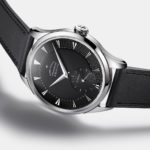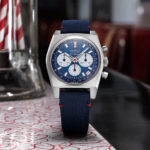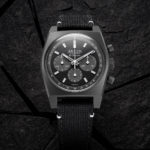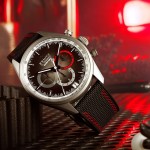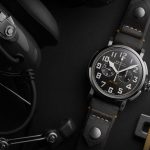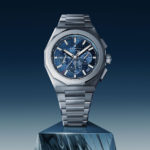Hands On: Zenith G.F.J., Calibre 135 Revived
The observatory chronometer movement is back.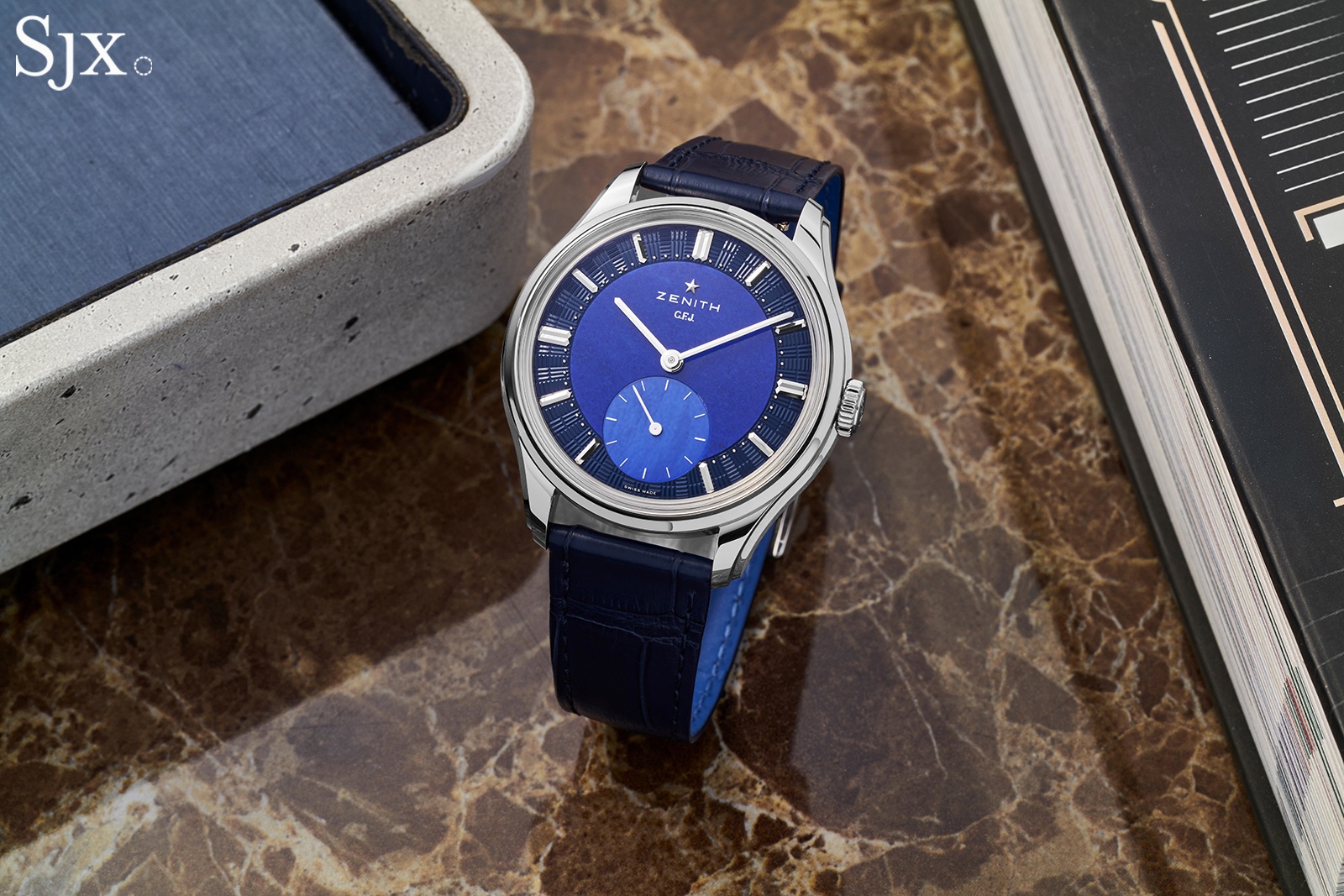
Zenith has finally started to look beyond the El Primero with the G.F.J., which features a new version of the storied chronometer cal. 135. Conceived to mark the brand’s 160th anniversary, the G.F.J. moniker is a reference to the brand’s founder, Georges Favre-Jacot, whose initials grace the facade at the manufacture in Le Locle.
This new model marks the return of the famous movement phased out about 60 years ago. But production has officially restarted, and the new cal. 135 features modern upgrades that differentiate it from the vintage original used in the Calibre 135 Observatoire introduced in 2022.
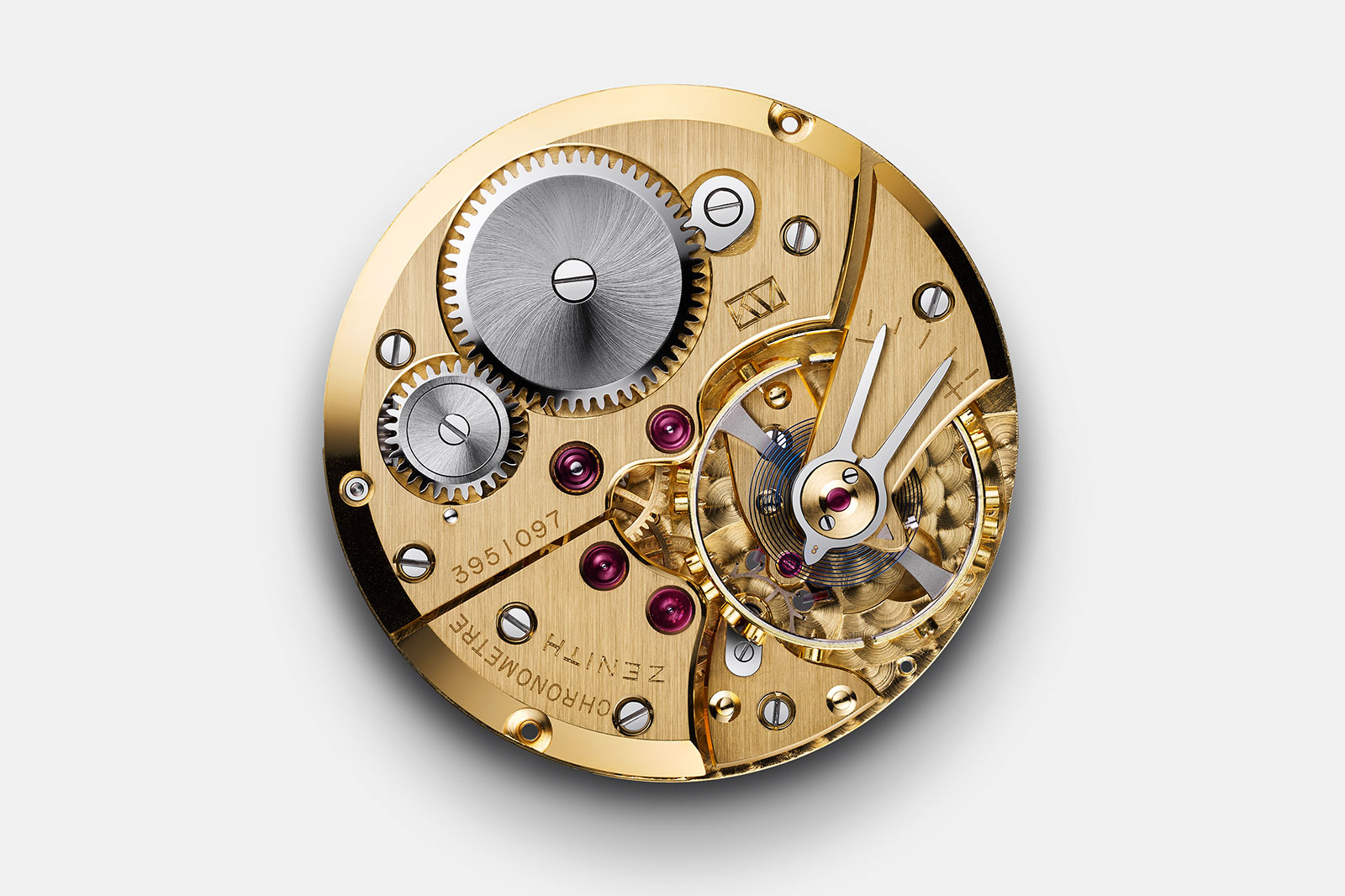
The “new old stock” cal. 135 that Zenith dusted off for the 2022 edition. Image – Zenith
The movement returns to market in a 160-piece limited edition in platinum and features an elaborate blue dial that that is made from lapis lazuli and mother of pearl. For about double the price, owners can request a full platinum bracelet, which endows the watch with impressive heft.
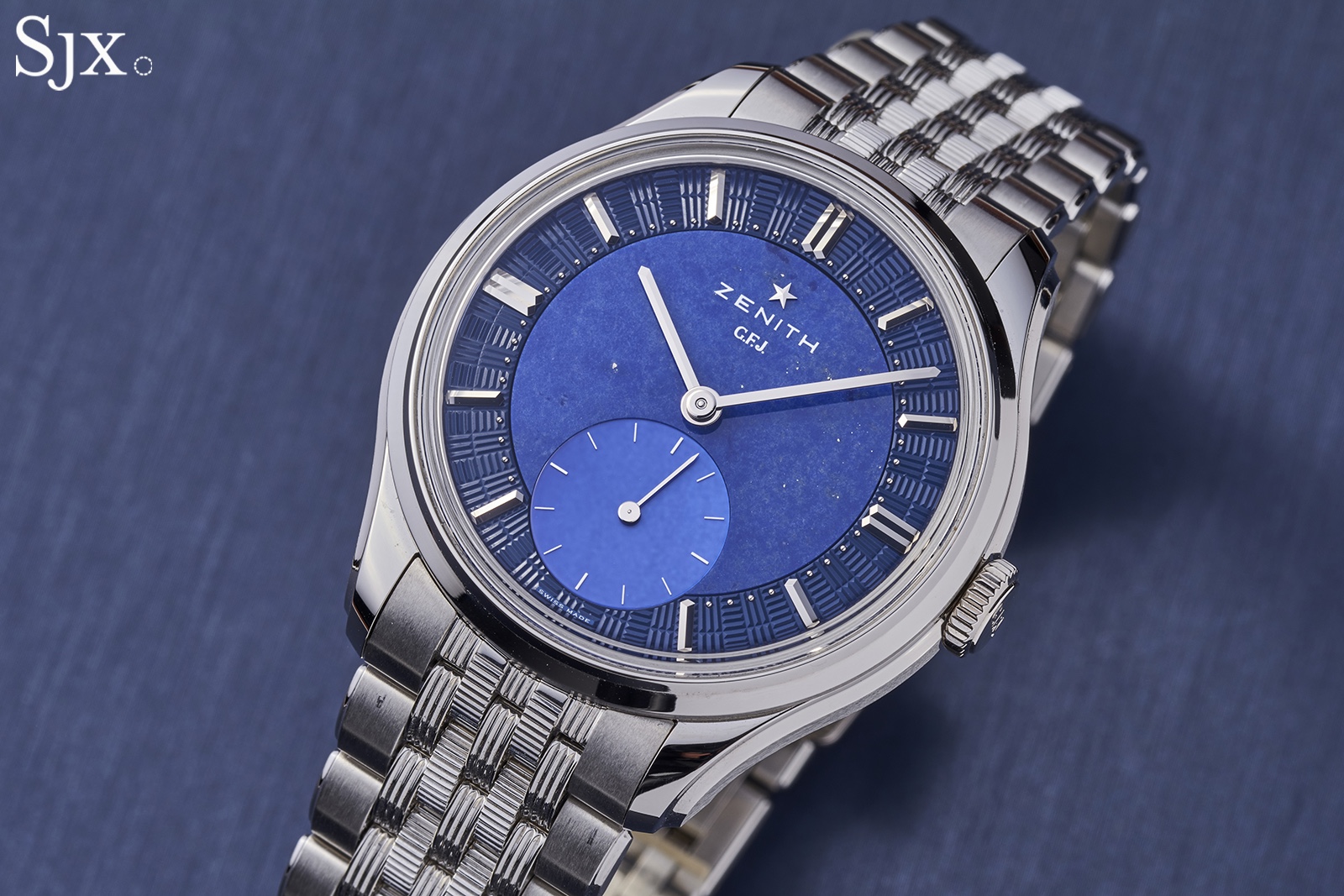
Initial thoughts
I’ve always liked the cal. 135 and wished Zenith would bring it back. That said, I was not convinced by the first stock images I saw of the G.F.J. I felt like the dial was overwrought, and the basketweave pattern on the movement was distracting.
Having spent some time with the watch, I would soften my criticism of the dial as it’s more subtle on the wrist and up close the details are finely done. Moreover, subsequent non-anniversary versions will likely have these details toned down further.
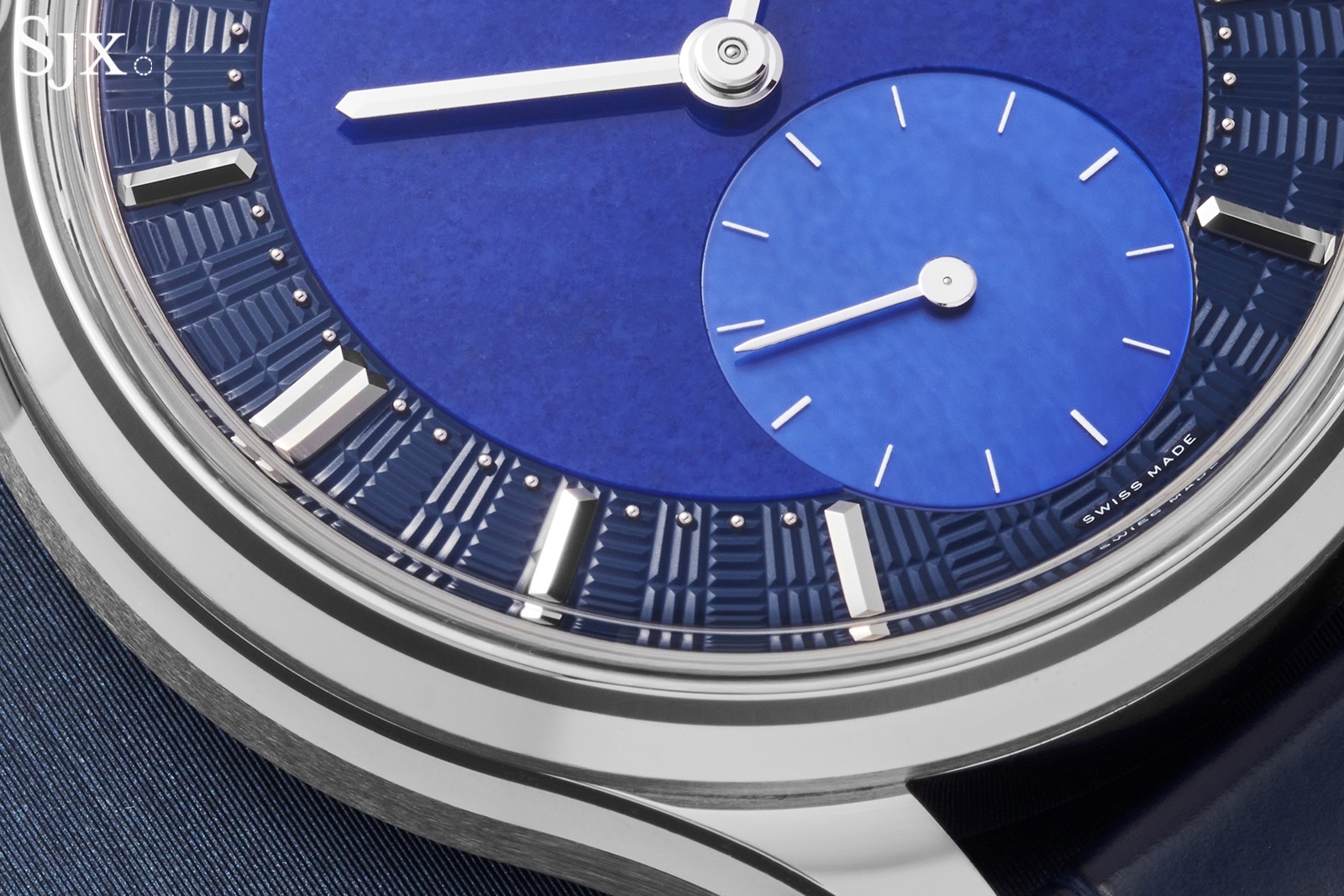
The pattern on the chapter ring is inspired by the bricks of the Zenith manufacture in Le Locle
As for the dial, it’s a multi-piece affair with a guilloche chapter ring and a center made from lapis lazuli and a small seconds register made from blue mother of pearl. There’s a lot going on for a simple watch, but the different textures work well together at arm’s length. The hands and dial markers are solid white gold, completing the precious nature of the dial.

The case appears straightforward at first glance but further examination reveals a number of interesting details and a very high level of execution. Beyond its specifications, which are nearly ideal for most wrists at 39 mm by 10.5 mm, the case band, lugs, and bezel are dressed up with elegant bevelling that befits a watch of this price range. Even the trivial details like the case back engravings are handled well, and the case is water resistant to 50 m, which offers an unexpected degree of security for a platinum dress watch.
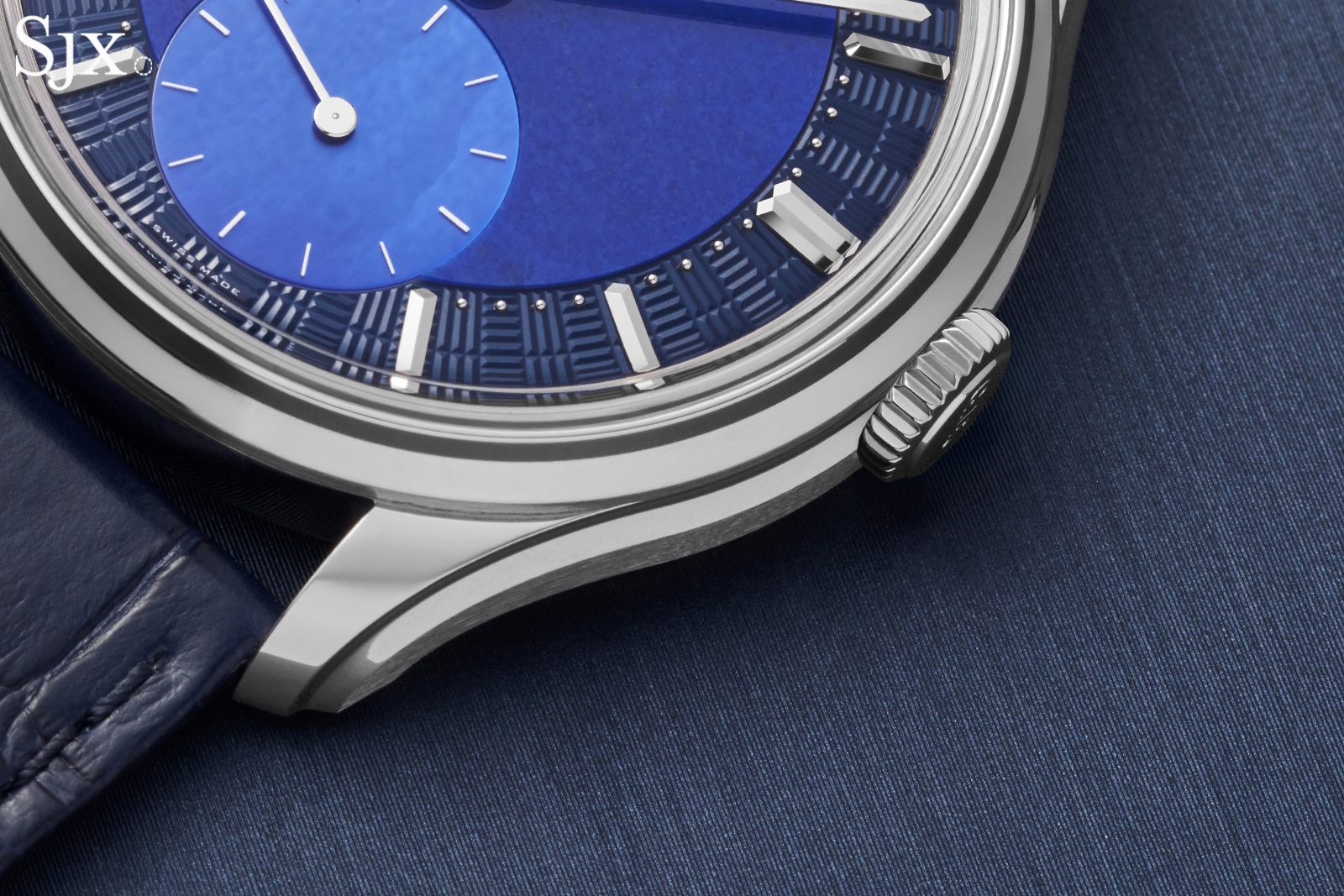
Then there’s the platinum bracelet, which is also unexpected but frankly pretty awesome. Adding the bracelet roughly doubles the price and ups the weight to 250 g, but it makes a statement in doing so. It’s nice to see a brand like Zenith take themselves seriously in this way, and while it probably won’t appeal to everyone, I think the extravagance is an appropriate way to celebrate the brand’s 160th anniversary and the rebirth of the cal. 135.
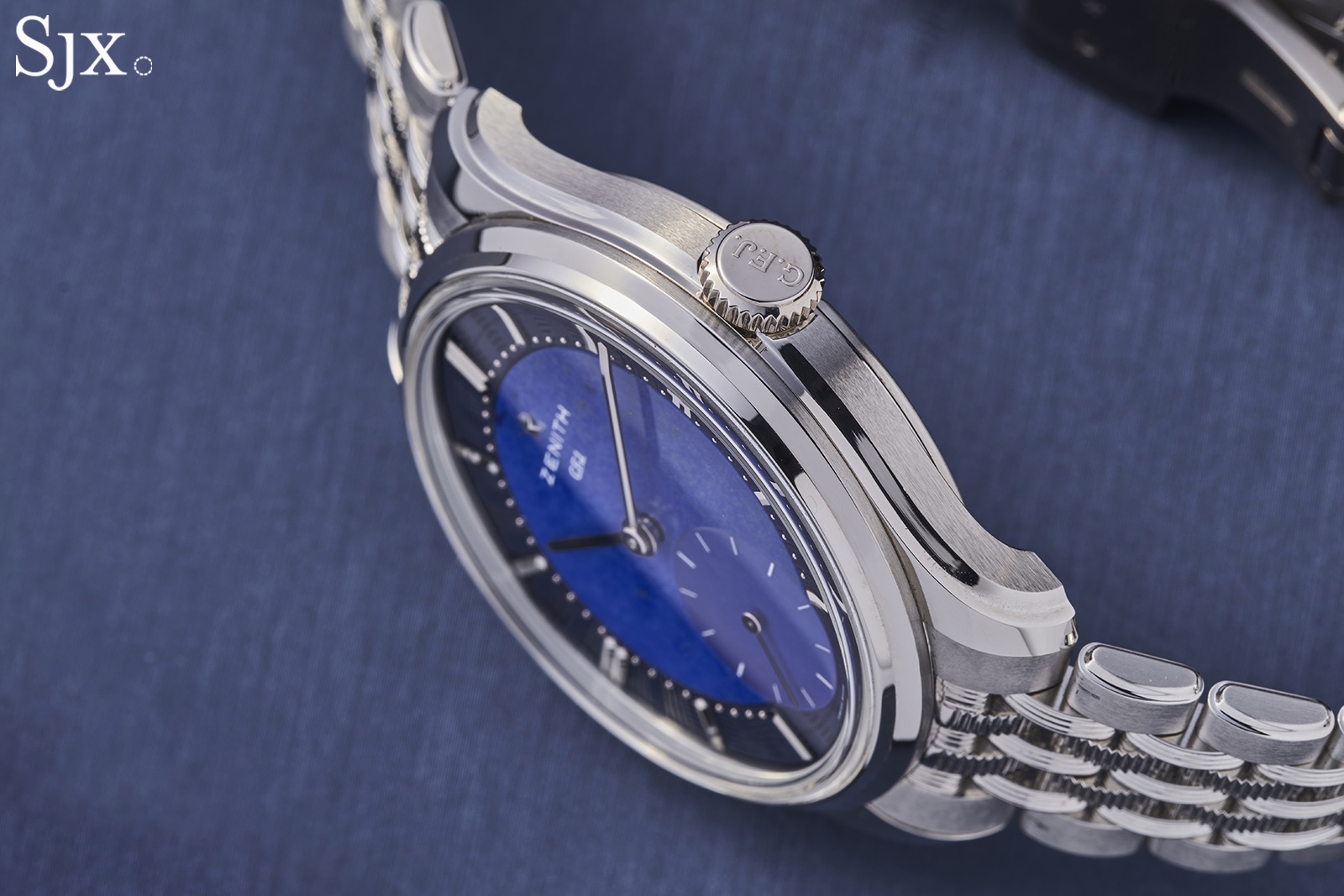
Of course, the big news here is that Zenith has restarted production of the cal. 135, a manually wound, slow beat movement with an oversized 14 mm balance wheel. Brands don’t restart production of beloved vintage calibers all that often, and when when they do, like when Omega brought back the cal. 321 in 2019, it’s a moment worth celebrating.
But unlike Omega, which chose to remain faithful to the original specifications, Zenith has seen fit to upgrade the movement to meet modern expectations, with a longer power reserve and hacking seconds.
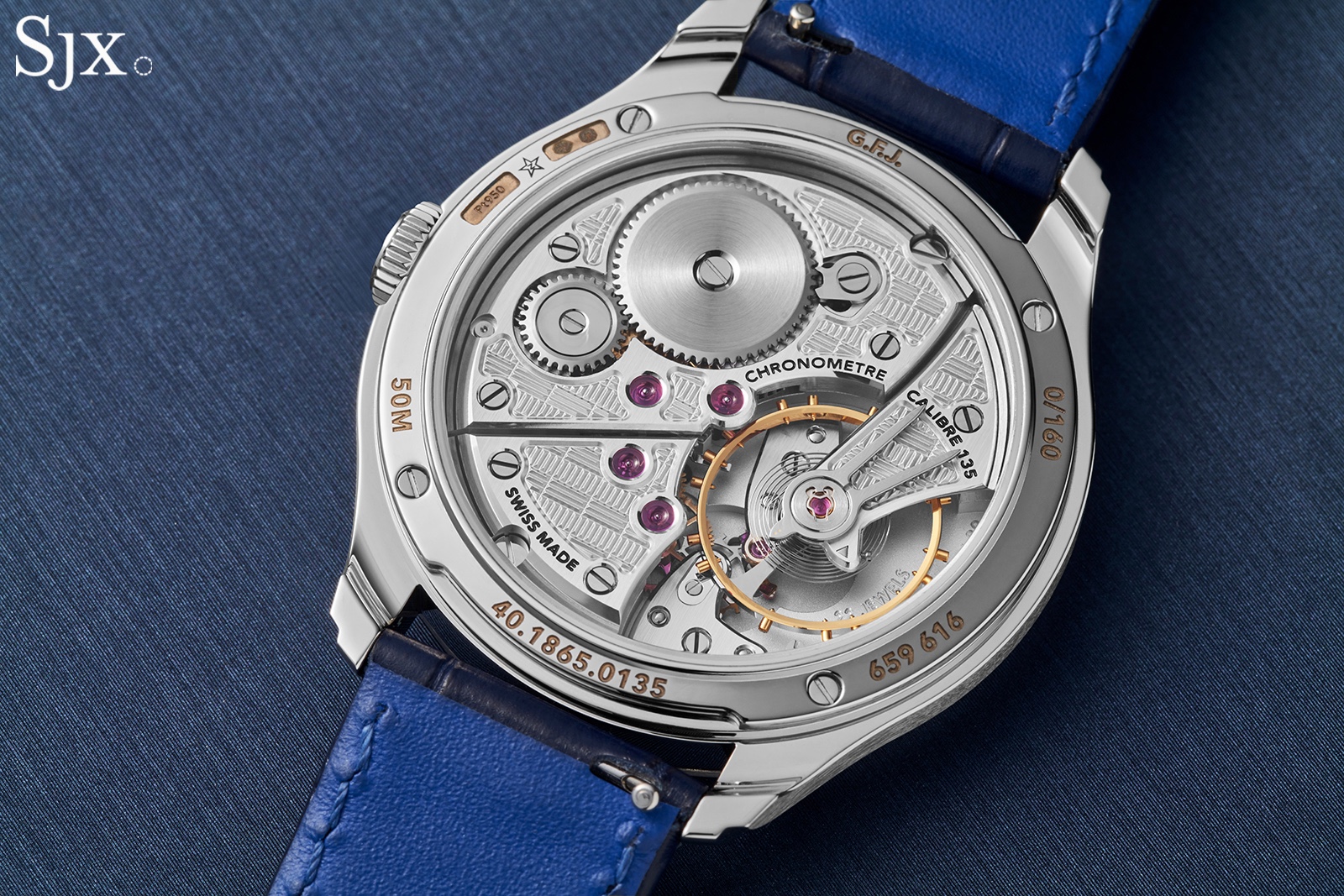
Though the US$49,900 price tag is in a different league relative to the typical Zenith, the value is acceptable. Tangibly it’s a very fine watch all the way through, with top-shelf materials and appropriate attention to detail.
Not only that, but the degree of hand adjustment is impressive; it takes a lot of work to get a watch that ticks at a slow 2.5 Hz to pass COSC certification, let alone the higher threshold of +/- 2 seconds per day that Zenith set for this watch.
Looking to the stars
For as long as I’ve been following the watch industry, which is about 17 years, Zenith has anchored its brand identity around the high-beat El Primero chronograph movement introduced in 1969. While the brand has certainly dabbled in time-only watches and other complications, it’s fair to say Zenith has viewed itself as a chronograph company, first and foremost, for a long time.
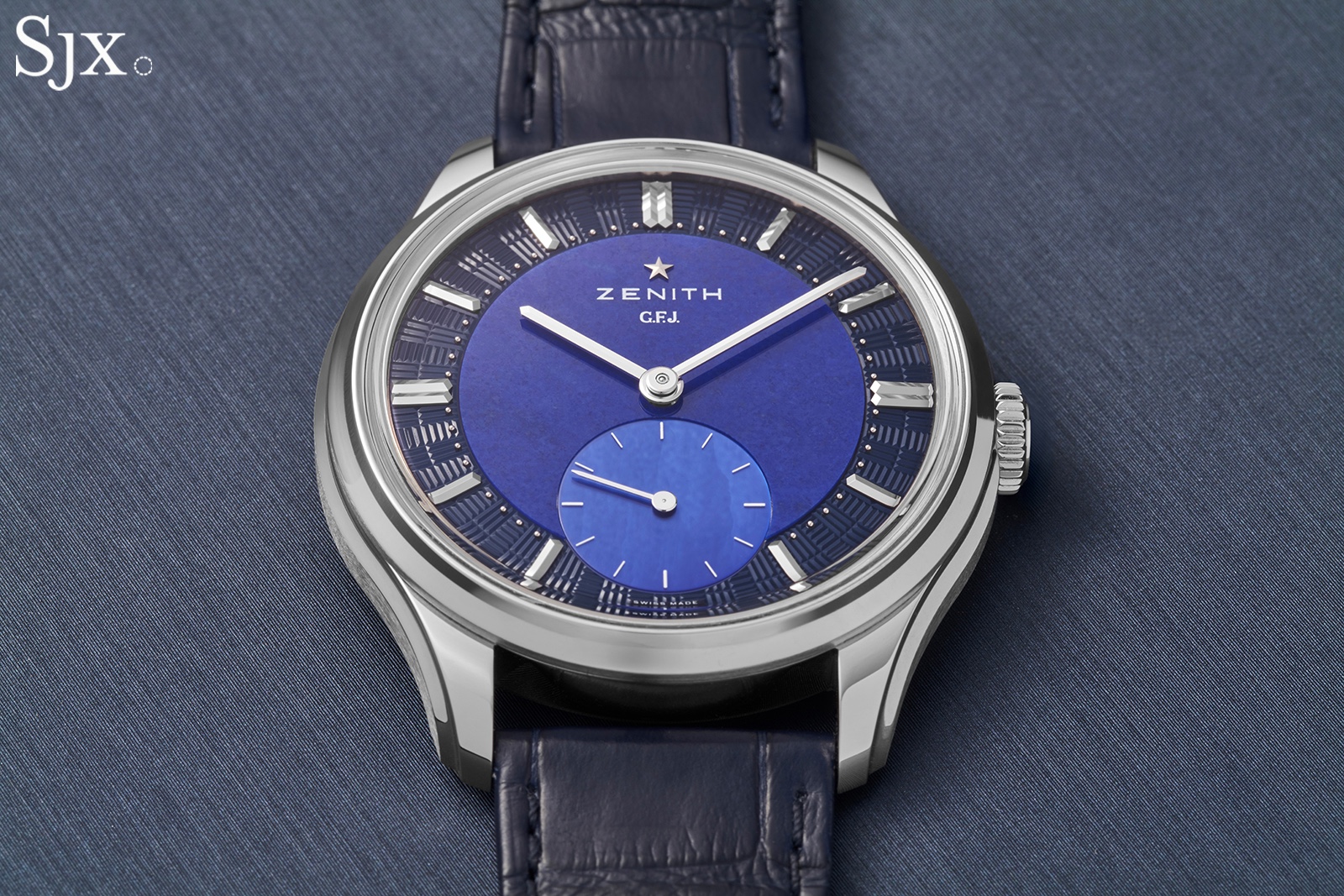
But this emphasis on the El Primero overshadowed the brand’s previous achievements in the field of observatory competitions, which were held annually between 1944 and 1967.
It was in 1948 that Zenith first took the Neuchâtel Observatory by storm, sweeping the podium with an innovative new movement called the cal. 135. Omega managed to retake the title a year later, but in 1950 Zenith began what would become a legendary streak of titles that would last until 1955.
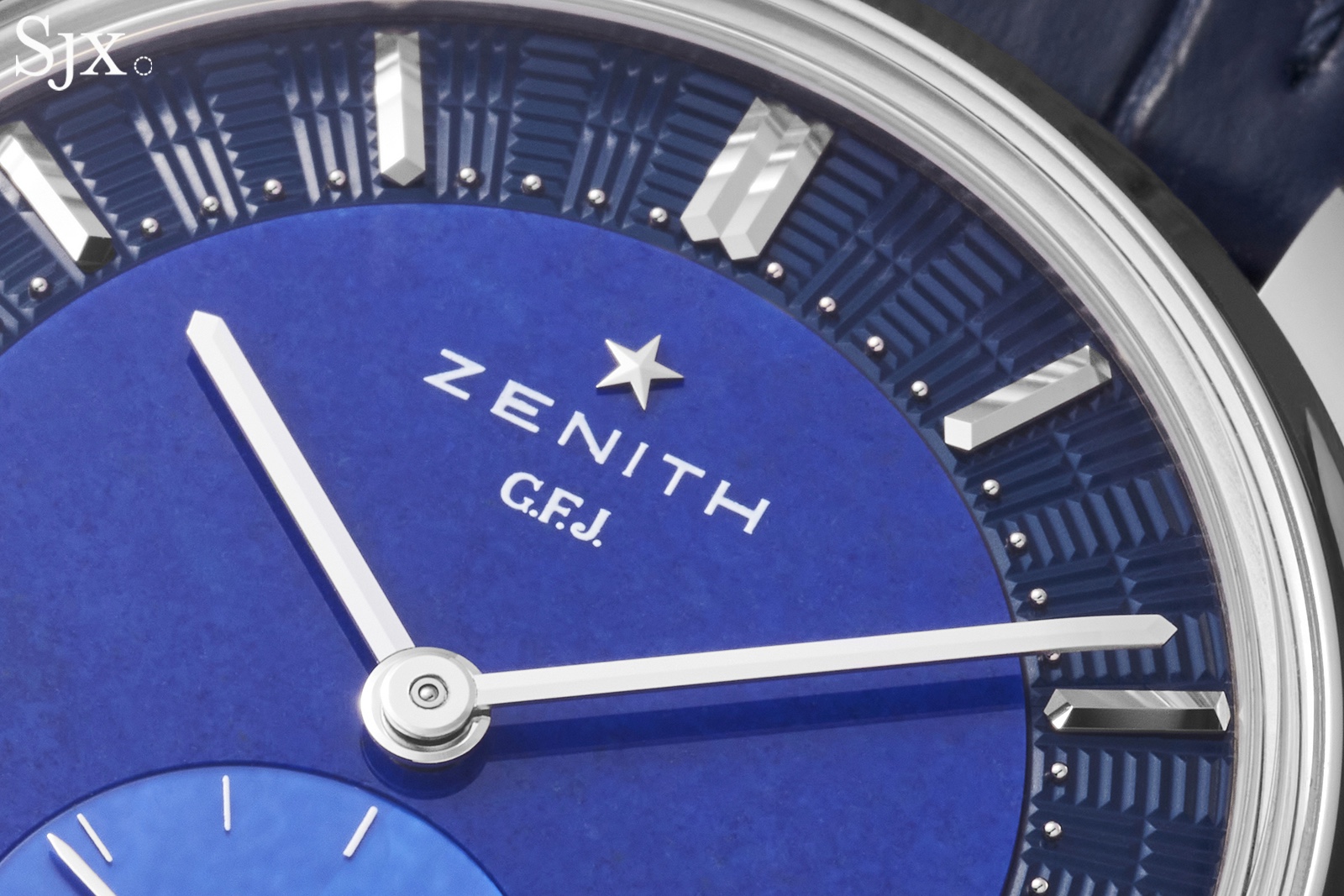
The chronometric dominance of the cal. 135 was achieved thanks to the dexterous skill of first-class régleurs like Rene Gygax and Charles Fleck, but their task was made easier thanks to some clever engineering.
In particular, the movement constructor Ephrem Jobin designed an off-center geartrain to make space for an extra large 14 mm balance wheel. This extra mass gave the movement superior characteristics for the specific environment of the observatory trials.
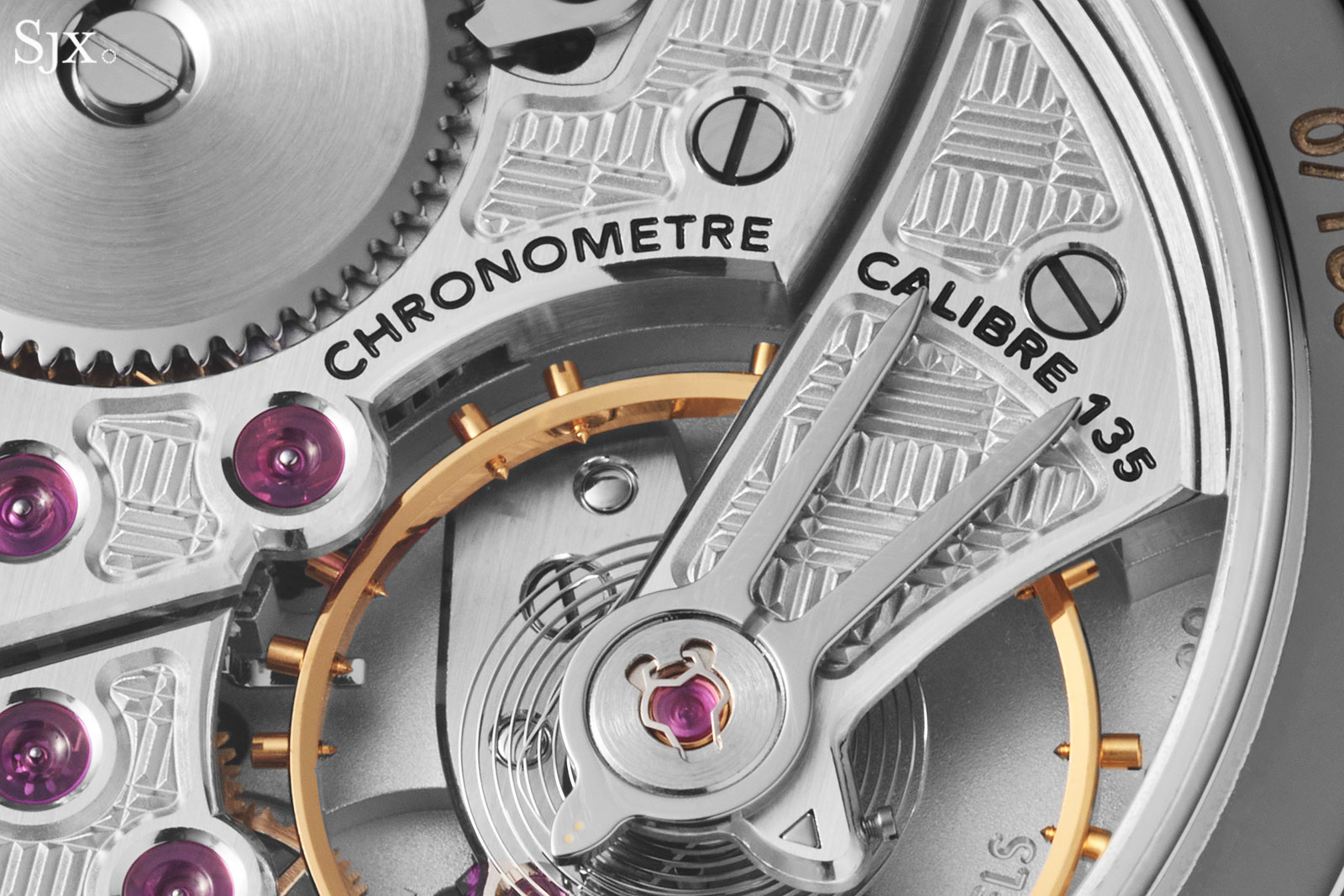
This outside-the-box thinking was soon copied by other brands, which went even further to create unusually shaped movements to allow for even larger balances. And when the Soviet Union got serious about watchmaking, they looked to the cal. 135 as their source of inspiration, and you can see the influence of this design on the mass-produced Soviet movements of that era.
Though the cal. 135 was born for competition, it did make its way into some commercially available watches like the Port Royal before it was eventually phased out in the 1960s.
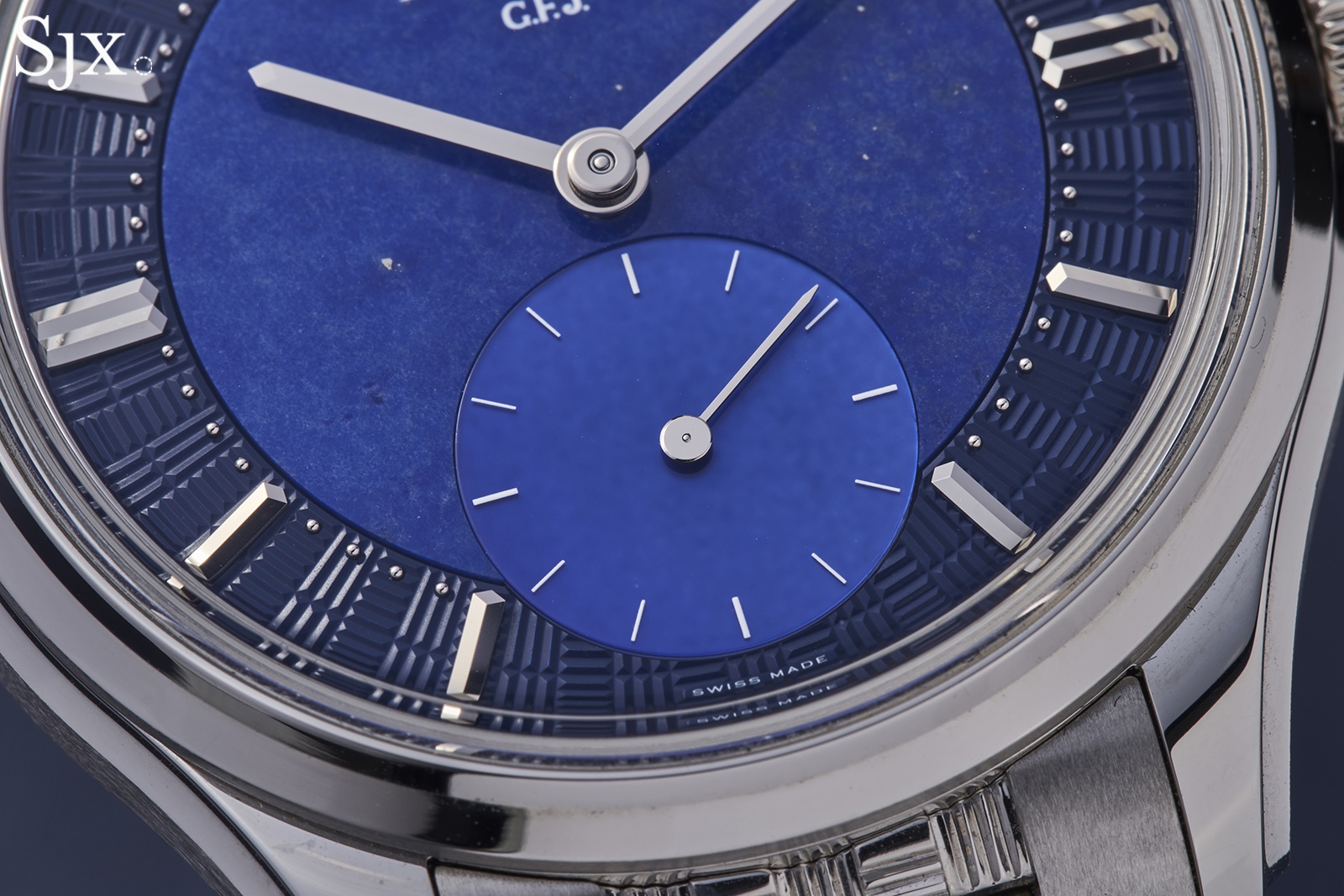
The cal. 135, reborn
The new movement carries the same cal. 135 designation as the vintage original, which is slightly confusing since the new movement benefits from a number of technical upgrades.
Of course, the key architecture has been retained, including the bridge layout and the enormous 14 mm balance wheel and overcoil hairspring. It also still beats at a slow and steady 18,000 bph, which was the preferred rate for competition chronometers in the 1940s and 1950s.
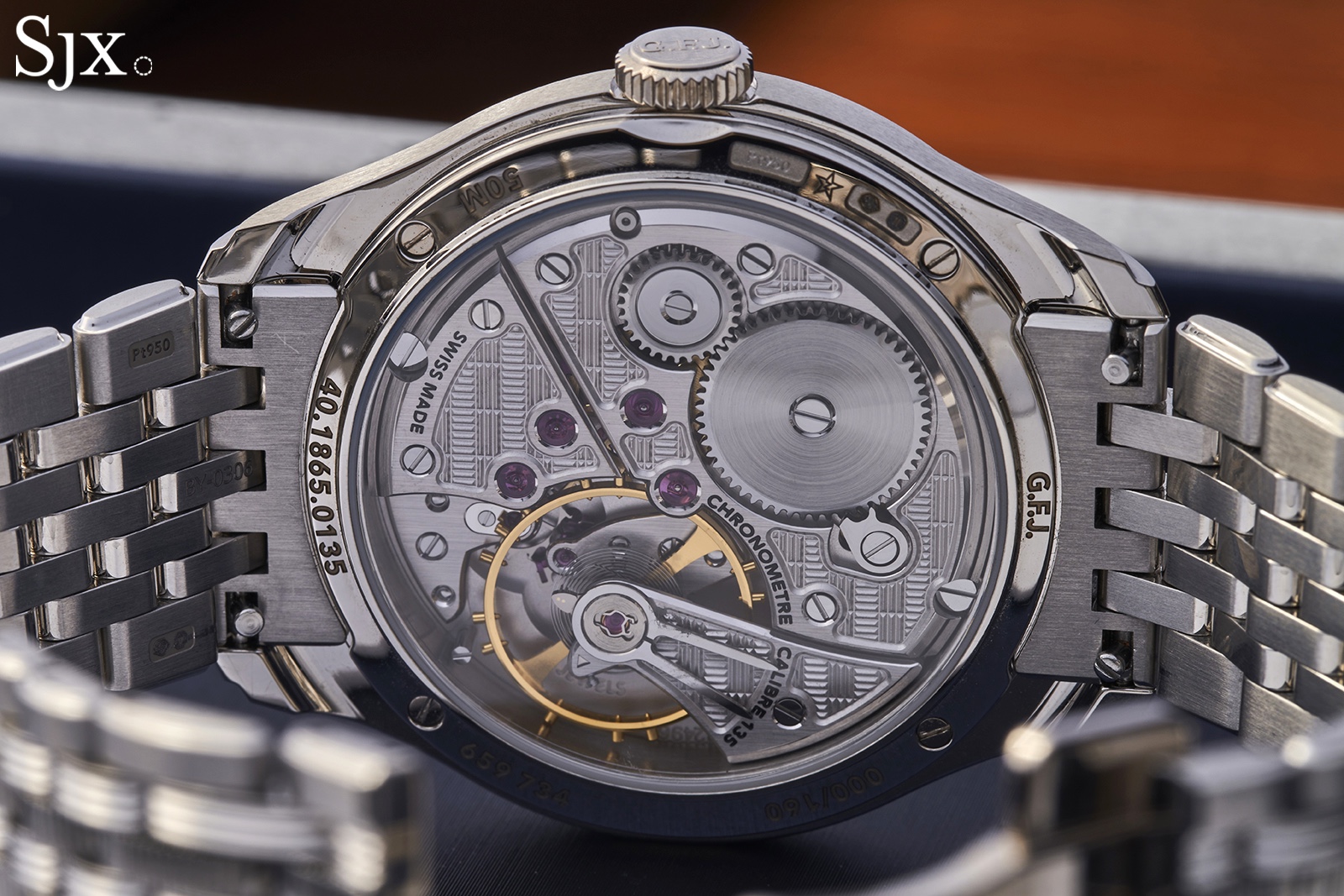
But thanks to a new mainspring, the movement runs for almost twice as long as the original, up to 72 hours. The balance staff is now shock protected, which means Zenith intends for this to be capable of everyday wear. Finally, the movement is now equipped with a stop-seconds device, so that users can more easily monitor the rate of the movement, which is has been adjusted to +/- 2 seconds per day.
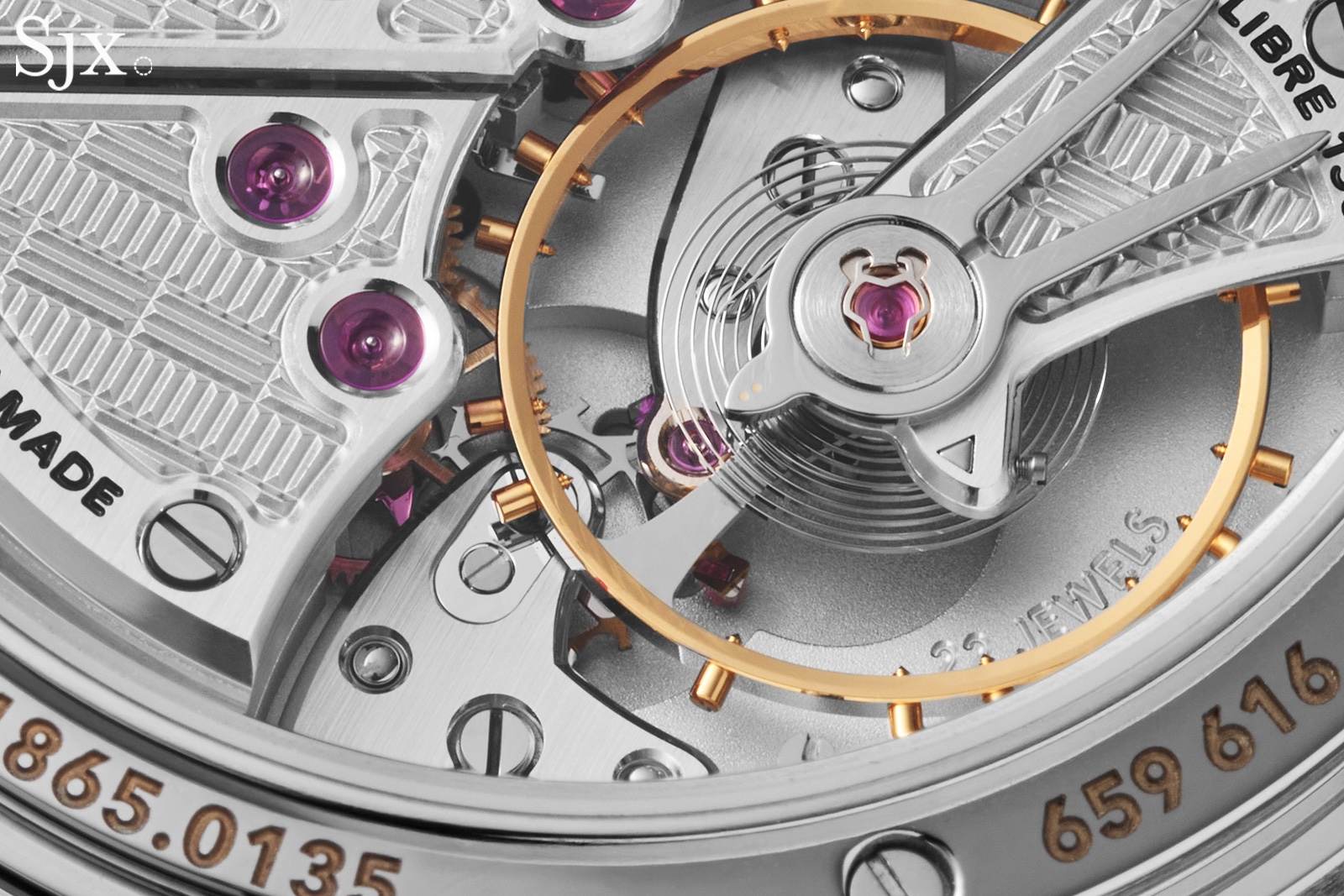
This is the kind of rate we typically see from industrial brands like Rolex and Omega, which use higher frequencies and more advanced materials to achieve this level of performance. The cal. 135 is comparatively antiquated, meaning there’s a lot of skilled labour that goes into adjustment.
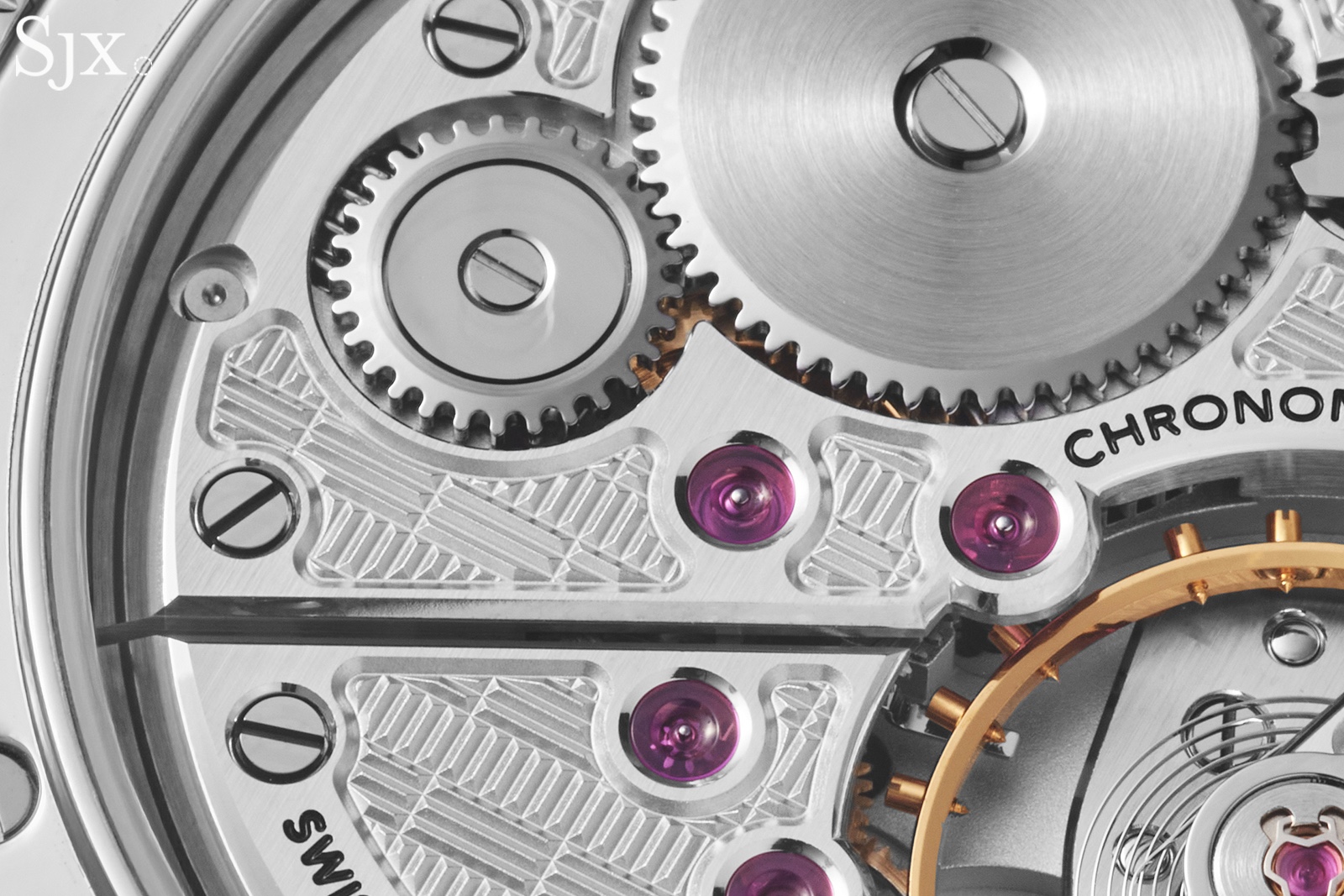
In terms of decoration, the cal. 135 in the anniversary G.F.J. gets a machined brick pattern that matches the dial, which to my eye makes it looks a bit busy. That said, the movement has received a degree of hand finishing that is unusual for Zenith, and includes a handful of tasteful inner angles to show for it.
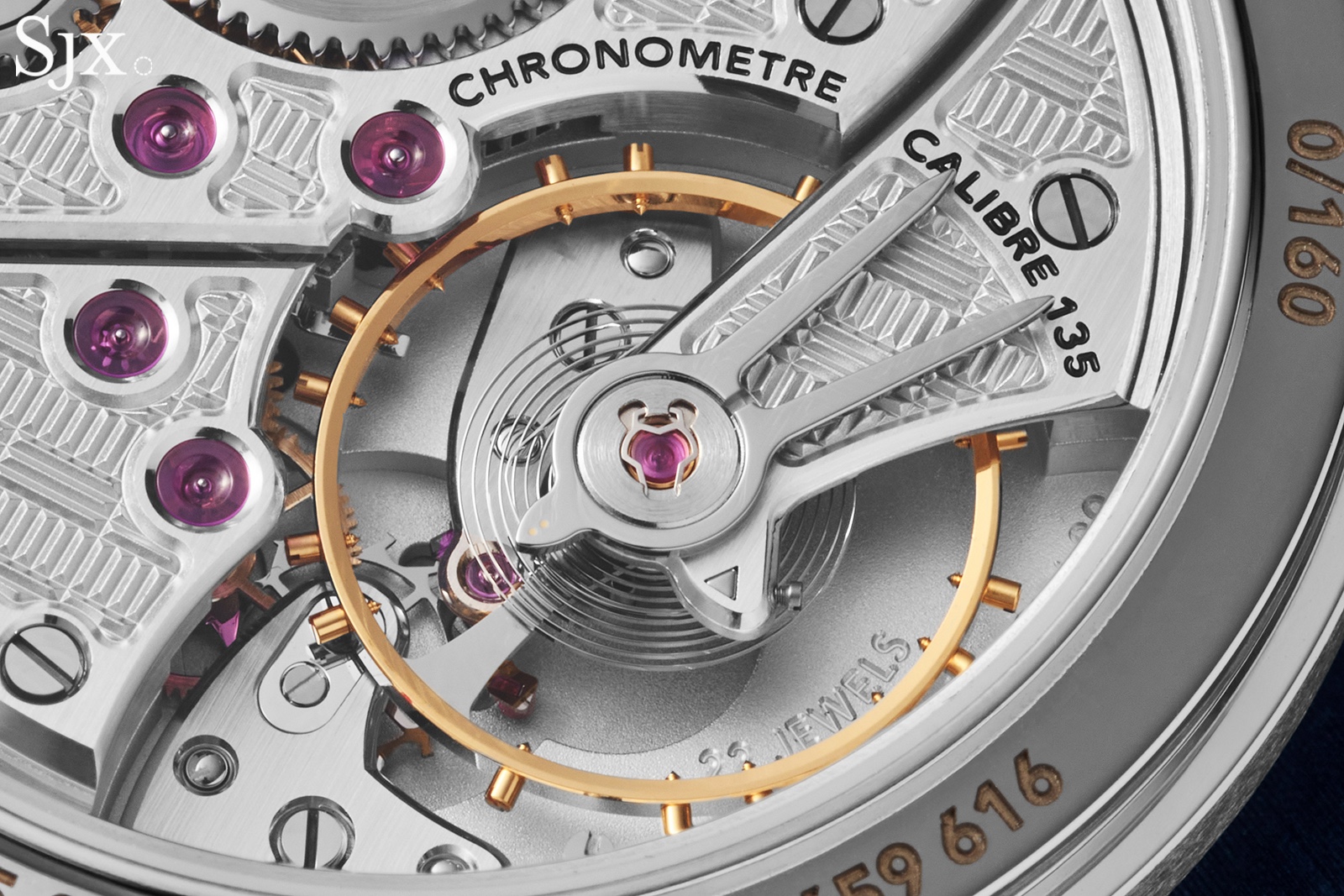
Closing thoughts
I applaud Zenith for bringing back the cal. 135 and reintroducing its history to contemporary fans of the brand. The choice to regulate these movements in excess of COSC certification is a nice touch that shows the brand is taking itself seriously. While I don’t like every aspect of the G.F.J.’s design, I respect the craftsmanship and look forward to more restrained designs in the future.
Key facts and price
Zenith G.F.J. Caliber 135
Ref. 40.1865.0135/51.C200
Diameter: 39.15 mm
Height: 10.5 mm
Material: Platinum
Crystal: Sapphire
Water resistance: 50 m
Movement: Cal. 135
Functions: Hours, minutes, and seconds
Frequency: 18,000 beats per hour (2.5 Hz)
Winding: Manual
Power reserve: 72 hours
Strap: Alligator strap with matching pin buckle, or optional platinum bracelet
Limited edition: 160 pieces
Availability: At Zenith boutiques and authorised dealers
Price: US$49,900 on leather strap; with bracelet approximately US$50,000 extra
For more, visit Zenith-watches.com
Back to top.

